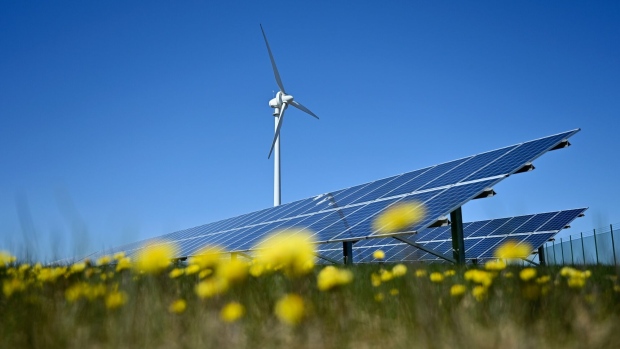Jan 24, 2024
Banks Are Asking Investors to Look Past a Dreaded ESG Metric
, Bloomberg News

(Bloomberg) -- Europe’s banks are asking investors not to pay too much attention to a new green metric due to be published in in the coming weeks, as early estimates show the industry woefully behind where it needs to be.
The Green Asset Ratio, launched by the European Banking Authority in 2021 with a deadline for 2024, measures the percentage of assets that aligns with the bloc’s list of sustainable business activities. The EBA in 2021 initially estimated the figure was about 7.9% on average.
Denisa Avermaete, senior policy adviser for sustainable finance at the European Banking Federation, a lobby group, says the number will “be a single digit number and probably lower than 7%.” In a fresh analysis, the EBF warns against taking the figure at face value. Lenders are set to release the data along with annual financial reports.
The EBF’s comments come a day after the European Central Bank warned that euro-area banks’ lending books are “substantially misaligned” with the Paris Agreement, opening them up to “elevated reputational and litigation risk.” Lenders are coming under increasing pressure to adapt their businesses to the realities of climate change, yet face challenges from a lack of suitable data to slow progress in decarbonizing the broader economy.
Read More: BNP Expands Crackdown on Oil, Gas Financing After Being Sued
The EBF is urging investors to look beyond GAR to other ESG metrics when they assess commitment to sustainability. Comparing ratios “is just meaningless,” Avermaete said.
In its analysis, the trade group said GAR can’t “tell the whole story” because of difficulties in determining and proving whether an asset is aligned with the EU’s taxonomy of green activities. For example, a bank may have funded installation of solar panels — but it can’t provide evidence that the manufacturer meets the EU’s minimum social safeguards.
The differences risk creating a mis-perception that a higher number automatically reflects a greener asset profile and stoking allegations of inflated pledges to address climate change, Avermaete said. Investors should “actually look at all the other KPIs” such as climate mitigation support, she said.
Read More: ECB Says 90% of Big Banks Face Elevated Climate Transition Risks
Yet officials are constantly warning that the sector isn’t doing enough. In a blog post on Tuesday, ECB Executive Board Member Frank Elderson reiterated an earlier finding that more than 60% of banks’ interest income is from counterparties in carbon-intensive sectors.
The low Green Asset Ratio figure estimated in 2021 set off protests by the banking industry against the requirement, objections which the EBA as recently as October rebuffed again. In an interview, Chairman Jose Manuel Campa said first impressions will be “incomplete” but waiting for “the perfect figure” isn’t an option.
Banks are reporting their alignment with the Taxonomy after authorities gave the industry a year more than non-financial companies to compile the necessary data from their clients.
Data problems and different interpretations of the technical details around reporting mean there may be marked differences between banks. What they report also will depend on business models because a number of customers are excluded from calculations. That includes small and medium-sized businesses.
Read More: Bank Watchdog Moves Ahead With New ESG Rule Feared Across Europe
“GAR doesn’t take into account all banks’ lending to finance transition as some of the transition assets would not be considered as aligned with the EU Taxonomy,” Aurelia Britsch, head of climate research at Sustainable Fitch, said.
Investors will be able to monitor progress next year when banks report again, but improvements are likely to be incremental because of the existing methodology for calculating the figure, Avermaete said.
The European Commission is scheduled to review the GAR in June. The follow-up was mandated in the original legislation in order to renew discussion over whether to include SMEs.
“Probably they are open also to fixing some of the other shortcomings,” Avermaete said. “We are actually supportive also of the taxonomy and also that the fact that it’s strict,” but there’s room to figure out “what can we still do to improve it.”
--With assistance from Nicholas Comfort.
©2024 Bloomberg L.P.





